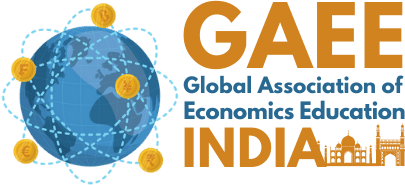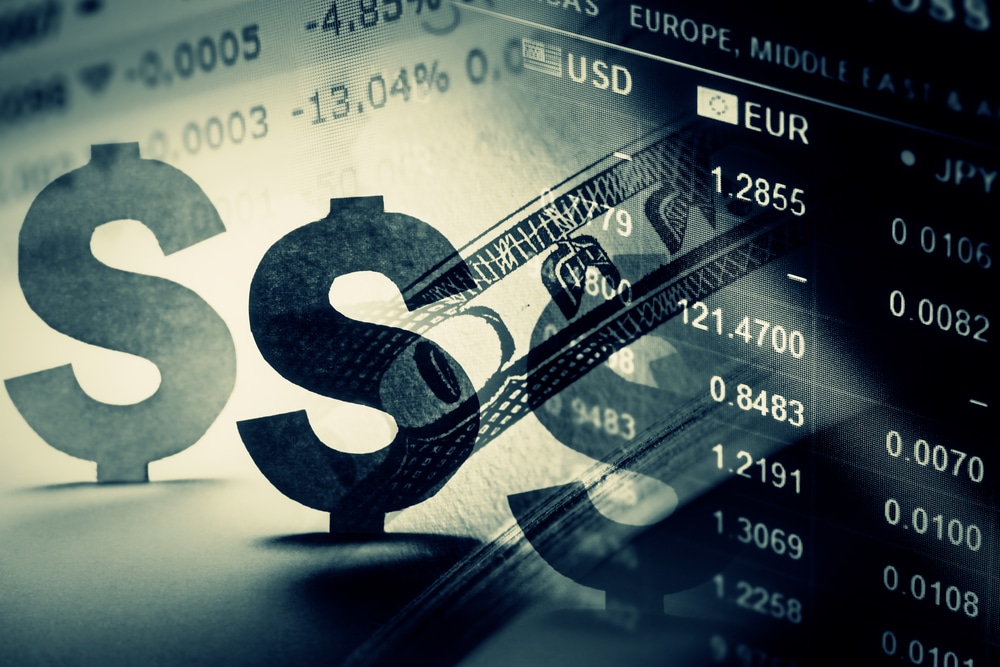Introduction:
Elections stand as the cornerstone of democratic societies, representing the collective voice of the people in selecting their leaders. However, beneath the surface, elections unfold as a captivating interplay of money, politics, and societal dynamics. As our democracies and associated systems transform, we unravel the political economy’s intricate web, particularly
in elections, which takes on paramount significance.
Political economy serves as the guiding compass, delving into the nexus between political and economic processes within a society. In the context of elections, it provides a lens through which we can comprehend the intricate dance of economic policies, institutional frameworks, and ideological undercurrents that shape voter choices and steer political outcomes. This exploration into the intricate tapestry of the political economy of elections opens the door to understanding the heartbeat of our democratic systems.
Factors Influencing Elections
Understanding the intricacies of the political economy of elections is not just a scholarly pursuit; it’s a compass guiding the trajectory of policy, governance, and the vitality of democratic systems. In this dynamic landscape, policymakers, analysts, and citizens find themselves navigating a complex web of factors that shape democratic decision-making. Let’s delve into some key influencers:
Economic Factors:
In the global electoral arena, economic policies wield substantial influence over voter behaviour. Promises of prosperity, job creation, and financial stability reverberate in campaigns worldwide. Economic indicators such as GDP growth, inflation rates, and unemployment levels become the pulse of voter sentiments, shaping electoral preferences across diverse societies.
Political Factors:
Diverse political cultures and ideologies leave an indelible mark on voter perceptions, steering electoral outcomes. The structural nuances of political institutions, electoral systems, and campaign finance laws play out differently, casting unique shadows on election dynamics across the globe.
Demographic Factors:
The demographic mosaic-comprising age, gender, ethnicity, and socio-economic
status-paints the canvas of global electoral outcomes. Younger voters often prioritize issues like education and job opportunities, while their older counterparts lean towards concerns of retirement benefits and stability. Gender dynamics add another layer, reflecting distinct priorities between men and women. Moreover, the ethnic and socio-economic composition of a population shapes electoral choices, as political campaigns must address specific concerns and expectations to secure support.
Globalization:
The international political economy of elections is not confined by borders. Global economic factors, from trade agreements to foreign direct investment, contribute to the intricate dance of democracy. Transnational dynamics, encompassing global alliances and responses to international conflicts and migration patterns, play a role in shaping economic and political discourse, elevating the impact of elections on a global stage.
Case Study: Evolution of Political Economy of Elections in Post-Independent India
India has witnessed significant shifts in the political economy since gaining independence in 1947. From mainly being an agricultural economy, the nation embraced economic liberalisation in the 1990s, fostering a new era of development. These historical events have left an unforgettable mark on the current political and economic landscape. Today, the country is on the path to becoming one of the most potent economic powers in the world. According to the IMF, India is projected to contribute over 16 per cent to the world’s economic growth.
India’s economic liberalisation in 1991 provides a compelling case study to understand the intertwining of political economy and elections. The reforms aimed to open the economy, encourage foreign investment and dismantle the license raj. The subsequent general elections witnessed a complex interplay of economic factors, political strategies, and societal responses.
These economic reforms led to a surge in aspirations among the middle class, but they also sparked concerns about job losses and inequality. Political parties had to navigate these
conflicting sentiments m their electoral campaigns. They capitalised on the promise of economic growth and stability, one of which secured a decisive victory in the 1999 elections.
Today, the rise of the IT sector and the digital revolution in India has transformed the economic landscape. Such factors become significant in elections, reflecting a rapidly digitised society’s aspirations and challenges.
Criticisms
Peering into the intricate realm of the political economy of elections can be akin to navigating a labyrinth. While the exploration unveils crucial insights, critics argue that the current analyses often fall short, lacking the depth required to decode the complex dynamics that underpin electoral processes. Here, we delve into the criticisms and challenges that cast shadows on the existing discourse.
1. Oversimplification:
One common critique targets the penchant for oversimplification in existing analyses. Critics argue that the prevailing discourse tends to skim the surface, neglecting the intricate interplay of cultural, regional, and historical influences that intricately weave the fabric of voter behaviour. It’s a call for a more profound understanding that acknowledges the diverse tapestry shaping electoral choices.
2. Lack of Nuance
Another criticism centres on the myopic emphasis on economic factors, potentially overshadowing the nuanced spectrum of individual motivations. Voter behaviour, critics argue, is a mosaic that extends beyond financial considerations to encompass cultural identity, social issues, and personal values. A plea for nuance resonates in the face of the multifaceted nature of human decision-making.
3. Influence of Money in Politics:
A critical concern echoes regarding the undue influence of substantial financial contributions on political decisions. Critics advocate for tighter regulations to safeguard the democratic principle of equal representation. The looming question is whether the influence of money in politics skews the playing field and undermines the essence of a fair and level democratic landscape.
4. Manipulation of Public Opinion:
Ethical dilemmas surface when misinformation and targeted advertising purposefully infiltrate the electoral arena. This prompts a challenge to the integrity of democratic processes and fuels calls for regulatory measures. The debate intensifies around how to strike the delicate balance between free expression and protecting the sanctity of fair democratic practices.
5. Fairness and Equal Representation:
A resounding critique targets the political economy of elections for not effectively grappling with socio-economic inequalities. This criticism raises questions about the fairness of representation, particularly as certain groups may bear disproportionate impacts from political and economic decisions. The challenge is clear – how can the democratic process ensure equal representation for all, irrespective of socio-economic backgrounds?
Future Prospects:
As the political milieu transforms, the future of elections reveals exciting trends and prospects. From integrating artificial intelligence in campaigns to the rising importance of environmental considerations and shifting voter demands, the political economy of elections is turning over a new leaf. Let’s delve into the key facets that will define the electoral landscape in the upcoming times:
- Artificial Intelligence (AI) revolutionises electoral processes by enabling advanced data analytics for personalised messaging. Political parties worldwide leverage AI to tailor messages, catering to specific demographics. This enhances understanding of voter behaviour and preferences and shapes personalised communication strategies.
In tandem, blockchain technology ensures heightened security and transparency in voting systems. It leverages an immutable ledger to safeguard electoral processes, reduce fraud risks, and instil public trust. Concurrently, technological evolution, particularly Augmented Reality (AR), reshapes voter engagement. AR facilitates interactive campaign experiences, fostering a more engaging and participatory electoral process. This combined influence of AI, blockchain, and AR signifies a dynamic shift towards more informed, secure, and engaging democratic processes.
- Environmental considerations have been increasingly influencing electoral dynamics globally. Voters now look up to candidates and parties equipped with robust plans to address environmental challenges and adopt sustainable practices and initiatives. As we anticipate future trends, political parties are expected to champion green technologies and sustainable policies and promote themes like renewable energy and circular economy practices in electoral campaigns. Additionally, parties amplify environmental messages by leveraging digital platforms and social media to reach a broader audience and mobilise support for eco-friendly policies. Technology integration into environmental campaigns signifies a dynamic shift in how political messages are disseminated and received in the digital age.
Future elections are anticipated to witness a demand for social and economic inclusivity. Voters now prioritise candidates and parties advocating policies to address income inequality,
improve healthcare accessibility, and promote social justice. This surge reflects an increasing awareness of the interconnectedness between economic and societal issues. Further, voters in the current tech-reliant era favour candidates who demonstrate proficiency in navigating challenges that arise from technological advancements.
- Lastly, there is a noticeable shift towards community-centric governance, where voters prefer candidates advocating local solutions to address specific regions’ unique challenges. Such an electoral trend underscores the growing recognition of the importance of tailored policies considering communities’ needs.
Conclusion:
In conclusion, our examination of the determinants of elections reveals a profound alignment with the principles of political economy. The influence of economic conditions and policies on voter behaviour and political outcomes is unmistakable. Through meticulous analysis of real-world cases, we gain valuable insights into the intricate interplay between economic factors and the democratic process. The imperative to amplify every voice in elections underscores the necessity for economic policies that address diverse needs. A robust political economy, in its optimal state, endeavours to foster equitable opportunities, social justice, and citizen welfare, thereby emphasizing the intrinsic connection between economic structures and the overall health of democracy.
References
Pacek, A., & Radcliff, B. (1995). The Political Economy of Competitive Elections in the Developing World. American Journal of Political Science, 745.
https-//doj org/2111652
Linn, S., Nagler, J., & Morales, M.A. (2010). Economics, Elections, and Voting Behavior. https://doi.org/10.1093/oxfordhb/9780199235476.003.0020
Dewan, T., & Shepsle, K. A. (2011). Political Economy Models of Elections. https://doi.org/10.1146/annurev.polisci.12.042507.094704
Prashant Bagad, Poonan Sahoo (2015). Effect of Elections on Indian Economy. Indian Institute of Management, Bangalore.
https-//tejas iimb ac in/articles/Effect%20of’}:o20Elections%20on%20Economy Tejas Jan2016 p df


Recent Comments